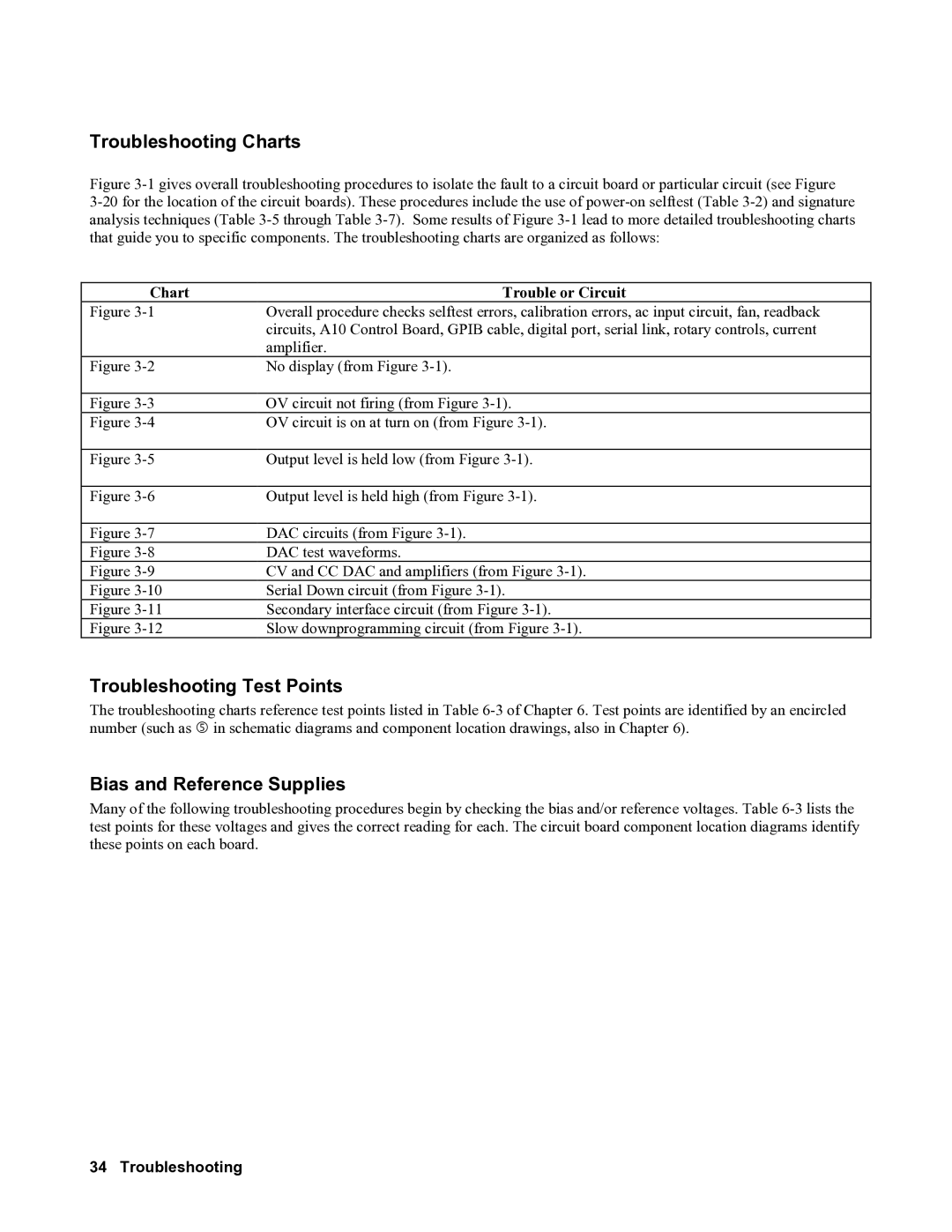Troubleshooting Charts
Figure 3-1 gives overall troubleshooting procedures to isolate the fault to a circuit board or particular circuit (see Figure
3-20 for the location of the circuit boards). These procedures include the use of power-on selftest (Table 3-2) and signature analysis techniques (Table 3-5 through Table 3-7). Some results of Figure 3-1 lead to more detailed troubleshooting charts that guide you to specific components. The troubleshooting charts are organized as follows:
Chart | Trouble or Circuit |
Figure | Overall procedure checks selftest errors, calibration errors, ac input circuit, fan, readback |
| circuits, A10 Control Board, GPIB cable, digital port, serial link, rotary controls, current |
| amplifier. |
Figure | No display (from Figure |
|
|
Figure | OV circuit not firing (from Figure |
Figure | OV circuit is on at turn on (from Figure |
|
|
Figure | Output level is held low (from Figure |
|
|
Figure | Output level is held high (from Figure |
|
|
Figure | DAC circuits (from Figure |
Figure | DAC test waveforms. |
Figure | CV and CC DAC and amplifiers (from Figure |
Figure | Serial Down circuit (from Figure |
Figure | Secondary interface circuit (from Figure |
Figure | Slow downprogramming circuit (from Figure |
Troubleshooting Test Points
The troubleshooting charts reference test points listed in Table
Bias and Reference Supplies
Many of the following troubleshooting procedures begin by checking the bias and/or reference voltages. Table
